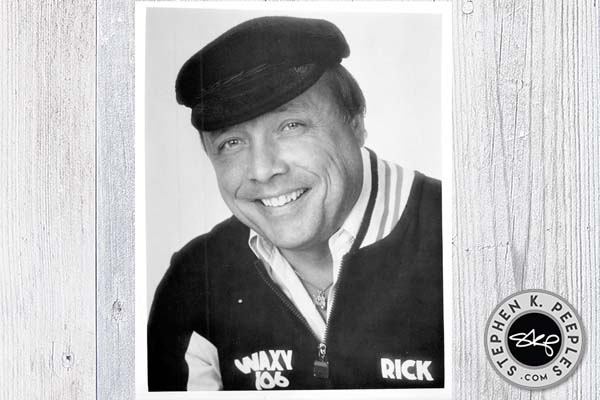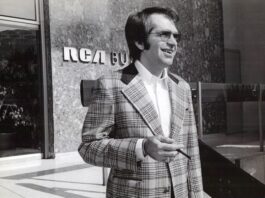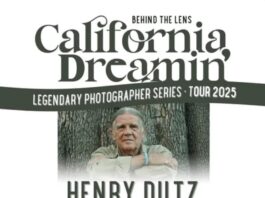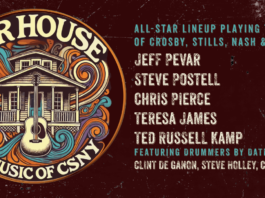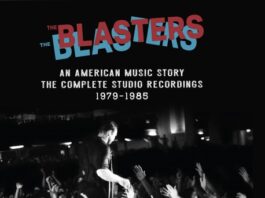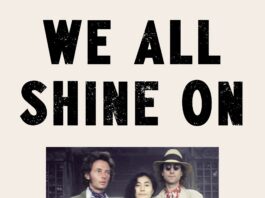Miami radio legend Rick Shaw passed away at his home in Cooper City, Florida, on Friday, September 22, 2017. He was 78.
Shaw was the top-rated radio celebrity in South Florida in the 1960s, and among other accomplishments, was the first disc jockey to spin The Beatles’ “I Want to Hold Your Hand” in Miami in early 1964, on top-rated Top 40 station WQAM, “Tiger Radio” at 560 AM on your transistor radio dial.
“I introduced it, did a little rap, ‘Hey, this is a new group from England…’ Probably 20 seconds into the record, the phone exploded. Just BOOM!” Shaw told this reporter in an exclusive, previously unpublished interview conducted in August 1989.
“Everybody’s like, ‘What? Who is that? What is that? What’s the name of it? Would you play it again?’” he said.
Of course, within days, Miami was as besotted by John Lennon, Paul McCartney, George Harrison and Ringo Starr as the rest of America.

All the previously released Beatles 45s that had stiffed in 1963 on indie labels Vee Jay, Swan and Tolie (the ones the A&R geniuses at Capitol Records, Parlophone/EMI Records’ U.S. affiliate, had opted not to release) got retrieved from the dustbin and hit the airwaves as well in early ’64.
By February 9 and The Beatles’ first visit to the States and “Ed Sullivan Show” TV appearance in New York, “I Want to Hold Your Hand” was famously No. 1 across the country and in Miami, where “She Loves You” and “Please Please Me” were also moving up fast on WQAM’s weekly Fabulous 56 survey. “She Loves You” took over No. 1 in Miami the week after “Sullivan,” with “Hand” holding onto No. 2 (see survey below).

At that point every other Top 40 DJ in Miami was playing Beatles singles and angling for some Beatles connection, as Murray the K had done in New York. Among them was Larry Kane, news director on WFUN, WQAM’s chief competitor, who spent a lot of time with the Fabs when they were in Miami for their second “Sullivan” appearance on February 16, and on the band’s first U.S. tour that summer.
 On Miami radio, though, Beatlemania started with Rick Shaw. And while Dick Clark may have been America’s oldest teenager, among kids who grew up in South Florida during the 1960s, that distinction will always go to Shaw.
On Miami radio, though, Beatlemania started with Rick Shaw. And while Dick Clark may have been America’s oldest teenager, among kids who grew up in South Florida during the 1960s, that distinction will always go to Shaw.
He was arguably the most popular and influential figure in Miami radio history – although at the time, few of us listeners knew or would care that it was Shaw’s boss, Todd Storz, who was pioneering the Top 40 format with WQAM right before our ears. Nor did we know what fun PD Dan Chandler had herding all those cats on the air.
Tuning in to WQAM
Like most WQAM listeners, my sister Ruth and I were just a couple of regular school kids, Baby Boomers born in October 1951 and January 1955, respectively. We lived in North Miami, a working- and middle-class suburb about 12 miles north of downtown and just a half-hour bike ride away from the Atlantic Ocean.

Hooked on rock ‘n’ roll the first time I saw Jerry Lee Lewis on “American Bandstand” in 1958, I’d tuned in to rock ’n’ roll on the radio in summer 1959. That was just after our journalist parents moved us all to Miami from the small town of Neenah, Wisconsin, where our mom grew up (that’s another movie). I was 7, going on 8 in that October.
The first rock ’n’ roll disc jockey I remember listening to was Bob Green, who had a show at night on the otherwise adult-oriented pop station WINZ, broadcasting from studios “high atop the Biscayne Terrace Hotel” in downtown Miami. I followed him when he went over to WQAM in ’60 or ’61. (Soon after that he left radio to manage the career of his wife, Anita “Paper Roses” Bryant.)

Before long, Ruthie and I both had transistor radios, and were glued to WQAM everywhere, all the time – listening at home, in the car (where Mom and Dad had little control over the radio buttons), at the beach (I’d started surfing in spring 1963), walking the few blocks to and from school, and later even in class sometimes (sneaky earphone placement).
Die-hard Tiger Radio listeners as we were, if we didn’t like a song or a commercial on WQAM, we’d flip to WFUN. I’d also tune in to WMBM, Miami’s R&B station, for James Brown and Ike Turner and the most insane DJ-read commercials I’d ever heard.

Night-time radio was otherworldly. While slowly turning the dial on the old Motorola tube radio my dad handed down to me, I felt transported picking up stations from hundreds, even thousands of miles away. I could get WLS in Chicago, WSB in Atlanta, WBZ in Boston, WSM in Nashville, WAPE in Jacksonville, stations in Cuba, Jamaica – signals skipping over the flatlands of the South and Midwest and the waters of the Caribbean and Atlantic.
But best of all was picking up Cousin Brucie nights on WABC 770 Chime Time in New York City. From Miami. The signal was so strong, even my transistor radio could even pick it up, and would even interfere with local WFUN next door on the dial at 790.

Rick Shaw Arrives at WQAM
Rick Shaw – real name James Hummel – landed in Miami in 1960 after stints at stations in East St. Louis, Omaha and Denver. He started to build a following on Miami stations WCKR/WIOD, where the station manager tagged him with a new on-air name and he became famous for wacky DJ promotional stunts.
Rick Shaw segued to Top 40 WQAM in 1963, by which time Ruthie and I both had our own palm-sized Japanese transistor radios surgically implanted.
Tiger Radio’s air talent also included local legends like Charlie Murdock (afternoon guy after school), Jim Dunlap (daytimes and program director during much of the ’60s heyday) and a couple years later Roby Yonge (aka “The Big Kahuna,” who went on to even greater fame in New York City).
Within a year, Shaw often had more listeners tuning in to what he’d often call “The Ricky-Ticky Show” on WQAM from 7-11 each night (and a few years later from 6 p.m. to 9 p.m.) than all other Miami radio stations combined.
It wasn’t just because Shaw played the most popular hits – although as you’ll see by perusing any of the weekly Fabulous 56 surveys from the era, many were huge records at the time, and many are now considered classics.
 What endeared Shaw to young Miami audiences were the hits PLUS his one-liners, wacky soundbites (like the Lone Ranger and Tonto from the TV series starring Clayton Moore and Jay Silverheels: “Could mean trouble, Tonto!” “That right, Kimosabe!”), and his riffs on obnoxious spots – all delivered at a blistering pace, pumped up by tons of reverb and echo, and broadcast to us through WQAM’s “framistan” at 5,000 watts.
What endeared Shaw to young Miami audiences were the hits PLUS his one-liners, wacky soundbites (like the Lone Ranger and Tonto from the TV series starring Clayton Moore and Jay Silverheels: “Could mean trouble, Tonto!” “That right, Kimosabe!”), and his riffs on obnoxious spots – all delivered at a blistering pace, pumped up by tons of reverb and echo, and broadcast to us through WQAM’s “framistan” at 5,000 watts.
Shaw was just in his mid-to-late 20s then – old enough to be a heroic figure to junior high school and high school kids 10-15 years younger, but not so old we listeners thought of him as a real adult or, God forbid, a parent. We all saw him as the cool older brother we wished we had.
Shaw’s show-opening jingle ended with the singers chirping, in ascending tones: “Wonderful…W-Q-A-M!” And as that rang out he would yell “SWINGS!” from inside his “echo chamber,” then launch into introducing the evening’s first record. Over time, “SWINGS!” morphed into “Suuuu-WOP!”
All genders (and even some parents) dug the music and the community Shaw and his show(s) created among teens around Miami, who were otherwise cliqued-up based on the schools they attended, among them Edison, North Miami, Norland, Miami Beach, Dorsey, Curley. Shaw and his entourage were a constant presence at school events like pep rallies and football games.
Jocks, soshes, surfers and nerds alike all listened to Rick Shaw on WQAM. He was dialed into Miami teens like Dick Clark was tuned into kids in Philadelphia, only more so.
Rick Shaw’s Nightly Top 10
Shaw had a bunch of high school kids, mostly hot girls, from all over Dade (Miami) and Broward (Ft. Lauderdale) counties, interning with him at WQAM. They’d answer phones for the nightly Top 10 survey and screen callers with special requests from 7 p.m. to 10 p.m.
In the last hour, we’d hear Shaw count down the Top 10 requests, which usually reflected the Fabulous 56, but at times leaned heavily toward Beatles and Stones.
There was one stretch where The Beatles’ version of “Boys” with Ringo singing lead was the No. 1 song for months, because all the girls taking the calls were Beatlemaniacs and stuffed the ballots, no doubt. At that point, you could tune in about 10:45 and always hear “Boys.” (Shaw answers the ballot-stuffing question in our 1989 interview.)
Whatever the night’s fave, it segued into Shaw’s signature sign-off song, teen idol crooner Ray Peterson’s 1959 single version of “Good Night, My Love,” which it got all the high school girls squishy, especially on date night Friday night. (Thank you, Rick.)
The Rick Shaw TV Shows
Shaw’s brand soon extended beyond radio to print; he wrote columns in local teen-targeted music papers and hawked Stridex acne cream in print and on the radio.
 By the mid-’60s he was also on local TV, hosting “The Rick Shaw Show” weekday mornings and “Saturday Hop” weekends on Miami’s WLBW Channel 10.
By the mid-’60s he was also on local TV, hosting “The Rick Shaw Show” weekday mornings and “Saturday Hop” weekends on Miami’s WLBW Channel 10.
Partly inspired by Dick Clark’s “American Bandstand” and The Beatles’ “A Hard Day’s Night,” the show featured the cutest local teen cheerleaders, bikini babes and mini-skirted Mod birds like Linda Benson, filmed on location at beaches, pools, schools and more, lip-syncing, go-go dancing and gyrating to current hit records and behind occasional guest performers.
Dorky guys like me lusted after the “Rick Shaw Dancers”; the girls watching picked up on the latest gear fashions and bitchen dance moves and wished they could be on the show.
Airing from 7 a.m. to 8 a.m., Shaw’s TV show was must viewing for us Miami kids while getting ready for school. It predated Clark’s similarly formatted “Where the Action Is,” which started airing in 1965 in the afternoon, after school. Both shows were precursors of the location-based video programs on MTV in the ’80s and ’90s.
Rick Shaw Brings the Spirit to The World
In 1967, Shaw and a few partners opened The World, a teen nightclub hidden away in a light industrial area of North Miami (just blocks from the famed Criteria Studios, where the Allman Brothers and Eric/Derek Clapton recorded a couple of years later, with a couple of North Miami kids named Ron and Howard Albert engineering).
Wednesday, Friday, and Saturday nights, The World was the place to be for high school kids to see the hottest local bands, like The Kollection, and visiting acts.
 Sometime in late 1967 or early ’68, Shaw introduced a segment of his radio show called “Ug,” short for “underground,” where he eased up on the Top 40 frenzy and played the heavier, psychedelic stuff Top 40 radio wouldn’t play.
Sometime in late 1967 or early ’68, Shaw introduced a segment of his radio show called “Ug,” short for “underground,” where he eased up on the Top 40 frenzy and played the heavier, psychedelic stuff Top 40 radio wouldn’t play.
He almost single-handedly broke the group Spirit in Miami in spring 1968. The band from L.A.’s Topanga Canyon hippie musician enclave had just released its first album, produced by Lou Adler (of Mamas & Papas renown).
Shaw’s play of tracks like “Fresh Garbage” and “Mechanical World” created a huge demand for the band to come to Miami to play live.
Shaw booked Spirit for a weekend at The World, brought them to town, and they sold out all four shows. So he kept Spirit in town for six more sold-out shows through the next weekend.
(Less than six months later, after moving to L.A., I was in Spirit’s backyard in Topanga Canyon, listening to them rehearse in a house tucked into the hills. And 12 years later, at Capitol, I was having lunch with just-signed Jay Ferguson, who said Miami helped them break nationally. But those stories are for another chapter.)
My family relocated from North Miami to L.A. in summer 1968, and it was an exciting move, for many reasons. Along with my childhood friends, what I missed most about Miami was listening to Ricky Ticky on WQAM. It would be 21 years before I’d hear his voice again.
1989: Westwood One, the Letter, and the Lost Rick Shaw Interview
Fast-forwarding to 1989, I was in my seventh year as a staff writer/producer for the Westwood One Radio Network, and the second year producing “The Lost Lennon Tapes” series, syndicated worldwide.
That February, celebrating 25 years after The Beatles’ first trip to America, I’d written and produced a three-hour special edition of “The Lost Lennon Tapes” titled “Beatles Conquer America ’64,” which aired over three weeks in January-February 1989.
It was great fun revisiting and reliving my adolescence, and feeling vindicated that my sister’s and my initial and unflagging affinity for this band and its music had not been misguided.
A couple years before that, as a WW1 writer/producer, I’d written Shaw a “professional” fan letter on company stationery, thanking him for the inspiration.
 But unfortunately, I didn’t reconnect with him in time to interview him for the three-hour special.
But unfortunately, I didn’t reconnect with him in time to interview him for the three-hour special.
So in the summer of ’89, when I returned to Miami for a 20-year high school reunion, I took a shot at setting up an interview to use in new episodes of “The Lost Lennon Tapes.”
Shaw was still on the air spinning oldies and serving as PD at WAXY in Ft. Lauderdale, about 25 miles north of Miami Beach, up U.S. 1 or A1A or Interstate 95.
Ready to record a phoner on my cheapo portable cassette recorder with suction cup that sticks on the receiver (ancient technology, but it worked), I called the station, stated by business, and the receptionist put me right through to him.
 “Hey, where are you calling from?” he asked.
“Hey, where are you calling from?” he asked.
“North Miami,” I said, “in town from L.A. visiting old friends.”
“Want to come up to the studio?”
“We’ll be there in 30 minutes!”
Charlie Mallicote, one of my first and best Miami friends, was spending the day with me. He and I attended the first Miami Pop Festival at Gulfstream Park in Hallandale in May 1968, where we saw Jimi Hendrix, Chuck Berry, Arthur Brown, Blue Cheer…another story for another time).
Also a major Rick Shaw fan, Charlie and I jumped into my rental ride and jammed up I-95 to Lauderdale, a stretch I hadn’t driven for more than 20 years. Back then, there were open fields. Now, all tract housing.
At the WAXY studio building close to the beach, Shaw met us at the elevator, grinning and extending his hand. He wore the same Greek fisherman’s cap that had been a trademark for several years by then (another story for another time).
He invited us into his office, where we sat down and flashed back to late 1963 and early 1964 for about half an hour.
Almost all my questions related to The Beatles (“It’s always a pleasure talking about my favorite band,” he said later).
But along the way, I noticed among the memorabilia and keepsakes he had pinned to the wall above his desk was a letter-sized document with a Westwood One logo on it.
 “That letter looks real familiar,” I said. “Is that the one I wrote you a few years ago?”
“That letter looks real familiar,” I said. “Is that the one I wrote you a few years ago?”
“Yeah, that was you?!” he said. “Well, I saved it!”
After hearing his stories about The Beatles, and with only a few minutes left before he had to go on the air, I had to ask Shaw about his own legacy.
“You were very much loved by the kids, and they looked up to you a great deal,” I said. “You were kind of a father figure in a lot of ways. Were you aware of that?”
“Not as much then as I am now,” he said. “I had no idea what was going on out there every night when I pushed the button and started ‘Goodnight My Love.’”
Shaw recounted a story a former listener had told him a couple of years earlier, at a 20-year reunion for Ft. Lauderdale High School’s Class of ’67.
“It was on the roof of the Holiday Inn on Lauderdale Beach, big room, and it has a glass window overlooking the beach,” he said. “It was a beautiful night, full moon and all that.
“About halfway through the evening, a guy walks over and says, ‘I’ve got to tell you something … You are the honorary godfather of my daughter.’
“And I said, ‘I’m honored, but why? What did I do to deserve that?’”
“He said, ‘Come here, I’ll show you.’
 “We walk over to the window overlooking the beach, and he says, ‘You see that palm tree down there?’
“We walk over to the window overlooking the beach, and he says, ‘You see that palm tree down there?’
“I said, ‘Yeah.’
“He says, ‘She was conceived right there at the base of that palm tree 13 years ago one night while we were listening to you play ‘Goodnight My Love.’ You were there…’
“And I was,” Shaw said. “I was in the backseat. They were growing up, learning about life, love and the pursuit of happiness, and I was on the radio, leading them through it.
“Somehow, some way in these stories, these relationships have evolved, because my thing here in South Florida – it’s so unusual,” he said. “It’s 29 years now [1989] and it’ll be 30 years on the radio in South Florida next year [1990].
“I really did grow up with these people. They look at me like an uncle or a brother or something, because I was there,” Shaw said. “I was there when Kennedy got shot, I was there during three hurricanes. We shared some good times, we shared some bad times, but we shared an awful lot of time, no matter how you slice it.
“And one of the most important things in life is consistency and dependability,” he said. “They can depend on me, and God knows I’ve been consistent.”
Rick Shaw kept rockin’ the oldies at WAXY and then Majic-FM until he retired in 2007, and his last broadcast was videotaped.
Check out Chuck Stewart’s September 2017 Rick Shaw tribute video.
Special thanks: Rick Shaw, Charlie Mallicote, Peter Blachley, the Morrison Hotel Gallery, The Miami Herald, the Estate of Charles Trainor, and Steve Geisler of the 560.com archive.
Santa Clarita journalist Stephen K. Peeples was the original, award-winning producer of “The Lost Lennon Tapes” radio series for Westwood One from 1988-1990. He is also a Grammy-nominated record producer (“Monterey International Pop Festival” box, Rhino/MIPF, 1992). He was a record company PR executive for Capitol Records (1977-1980), Elektra/Asylum Records (1980-1983) and Rhino Entertainment (1992-1998). He was Rhino’s first web editor (1996-1998), and then editor of Warner Music Group websites (1998-2001). In California’s Santa Clarita Valley, Peeples was the award-winning Online Editor for The Signal newspaper’s website from 2007-2011, and wrote-hosted-co-produced SCVTV’s WAVE-nominated “House Blend” local music show from 2010-2015. He is now VP/New Media Emeritus for Rare Cool Stuff Unltd. For more stories and info, visit https://stephenkpeeples.com. For exclusive behind-the-scenes interviews, subscribe to his YouTube channel.
Article: Rick Shaw, Miami Radio Legend – A Listener’s Appreciation
Author: Stephen K. Peeples
Category: News & Reviews
Article Source: StephenKPeeples.com

